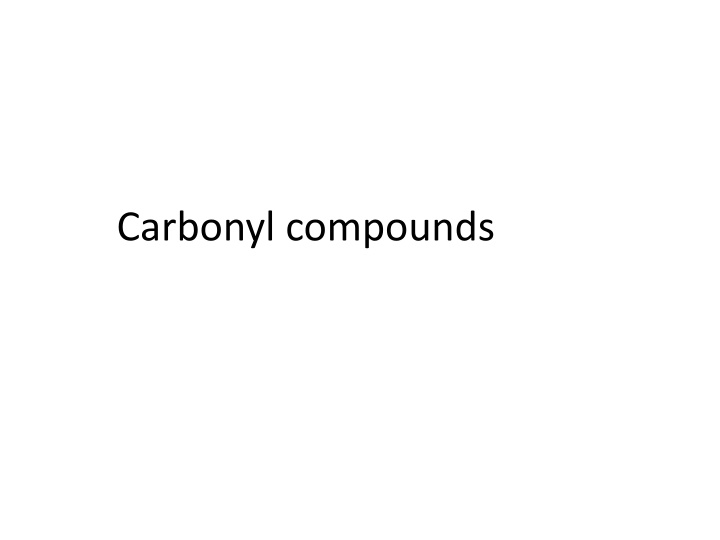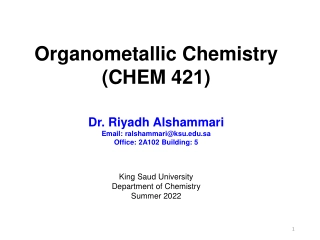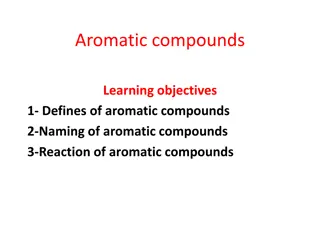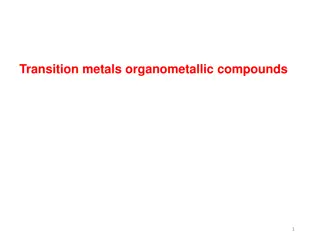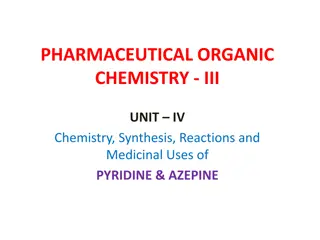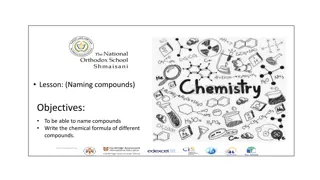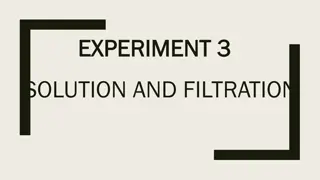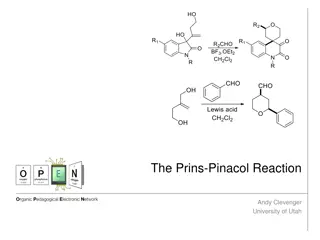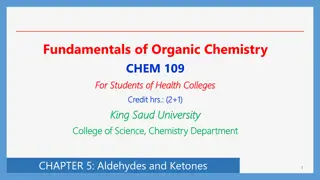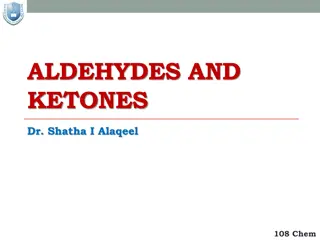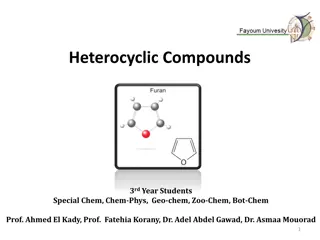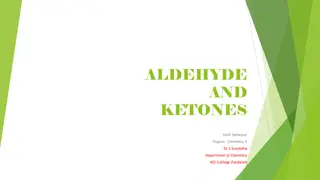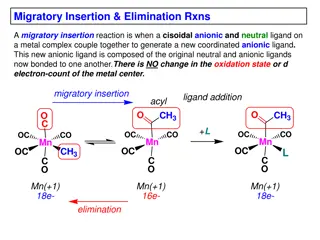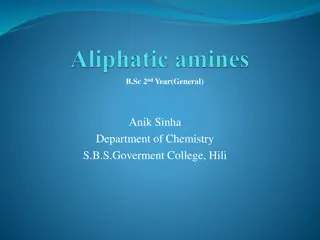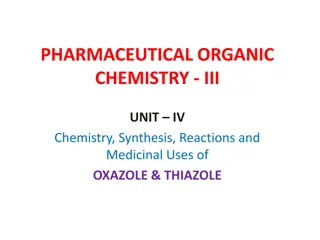Metal Carbonyl Compounds: Structure, Synthesis, and Reactions
Metal carbonyl compounds are formed when the CO group is attached to a metallic element, classified into mononuclear and polynuclear carbonyls. This article explores the synthesis of nickel carbonyl, its reactions, physical properties, and structure, including electron diffraction studies. Learn about the oxidation state of nickel, the tetrahedral configuration, and detailed insights into nickel tetracarbonyl. Discover the fascinating world of these compounds through various reactions and properties.
Download Presentation

Please find below an Image/Link to download the presentation.
The content on the website is provided AS IS for your information and personal use only. It may not be sold, licensed, or shared on other websites without obtaining consent from the author.If you encounter any issues during the download, it is possible that the publisher has removed the file from their server.
You are allowed to download the files provided on this website for personal or commercial use, subject to the condition that they are used lawfully. All files are the property of their respective owners.
The content on the website is provided AS IS for your information and personal use only. It may not be sold, licensed, or shared on other websites without obtaining consent from the author.
E N D
Presentation Transcript
Metal Carbonyl are the compounds the CO group is attached to a metallic element. Classified into 2 group (a)Mononuclear carbonyls M(CO)x (B)Polynuclear carbonyls M2(CO)y MNC are formed by metals with even atomic number Dia magnetic in nature
Nickel carbonyl-mononuclear carbonyl Synthesis 1.Nickel carbonyl can be obtained by passing CO over nickel at 60 degree Ni + 4CO----- Ni(CO)4 2.When nickel iodide is heated with CO NiI2+ 4CO-----Ni(CO)4+I2 3.CO react with alkaline suspension of nickel sulphate or nickel cyanide give NiCO
NiS +4CO-----Ni(CO)4+ S Ni(CN)2+ 4CO----Ni(CO)4+(CN)2 Reactions 1.Action of heat-nickel carbonyl decomposed when heated Ni(CO)4 ----- Ni + 4CO 2.Action of acids : Ni(CO)4 +H2SO4----- NiSO4+H2+4CO 3. With bases : Ni(CO)4 + Ba(OH)2---H2Ni(CO)3+BaCO3 4.With halogens: Ni(CO)4 + Cl2--- NiCl2 +4CO 5. Displacement reaction: Ni(CO)4+PCl3---Ni(CO)2(PCl3)2 +2CO 6.With HI: 2HI + Ni(CO)4----NiI2+ H2+4CO
Action of nitric acid: It reacts with nitric acid and give a compound of intense blue colour Ni(NO)(OH) Physical properties : It is extremely toxic. colourless liquid on heating suddenly it may explode mildly. It is miscible with benzene and is almost insoluble in water.
Structure The electron diffraction studies shows that the configuration is tetrahedral and Ni-C-O group is linear. Raman spectral studies have revealed that the oxygen atom is triply bonded to C atom in the CO group. It is assumed that the Ni atom has the configuration is 1s22s22p43s23p63d84s2
Stucture of nickel tetra catbonyl n nickel tetracarbonyl, the oxidation state for nickel is assigned as zero. The formula conforms to 18-electron rule. The molecule is tetrahedral, with four carbonyl (carbon monoxide) ligands. Electron diffraction studies have been performed on this molecule, and the Ni C and C O distances have been calculated to be 1.838(2) and 1.141(2) angstroms respectively.
Uses of nickel carbonyl Useful in the extraction of nickel by monds process Utilized for purification of nickel It is used for the preparation of metal mirrors and plates. Used for glass plating It is used as a catalyst.
Binuclear carbonyls of Ni Binuclear carbonyls are formed by metal with odd atomic numbers. The atomic no of Ni is 28. So it does not form a binuclear complex.
